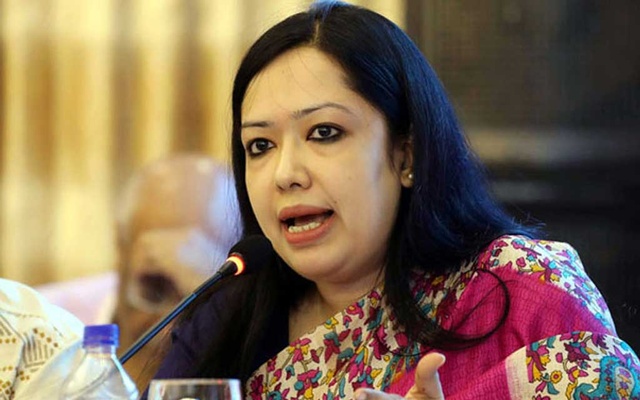TBS

46-year-old civil engineer Zahangir Mallick sat at his desk with a calculator, a stack of medical bills, and his daughter’s IELTS coaching receipts. “I am the only earning person in the family,” he said quietly. “Consider the numbers—the cost of a four-year private university degree in Dhaka can exceed Tk12–15 lakh. A coronary stent at a private hospital may cost Tk3 lakh. Meanwhile, my salary is somewhere around Tk40,000–50,000. The arithmetic simply does not add up.”
Zahangir is part of Bangladesh’s Generation X, the group born roughly between 1965 and 1980, who came of age just as the nation was trying to shake off war scars and political upheaval. Unlike their parents, who endured famine and curfews, Gen X were the first to imagine a middle-class life defined by stability.
Now in their forties and fifties, they are juggling careers, raising children, and caring for elderly parents, often with little support and a quiet exhaustion.
In Western contexts, “Generation X” gained a cultural identity through Douglas Coupland’s 1991 novel of the same name. In Bangladesh, the term hardly travelled. Many do not even realise they belong to it. The closest description might be the “forgotten middle children”—too young to be revered, too old to be trendy.
Boomers dominate politics, universities, and bureaucracies. Millennials and Gen Z shape the digital culture, memes, and start-ups. Generation X remains sandwiched between them, rarely the subject of newspaper profiles or policy debates.
“You will not find them trending on Facebook reels,” said researcher Mahmudur Rahman. “They are too old for social media and at the same time too young for nostalgic reverence.”
This invisibility belies a heavy burden. Gen Xers are often solely responsible for financing both ageing parents and ambitious children. Their parents, now in their seventies or eighties, require medical attention in a country with little health insurance coverage. At the same time, their children demand English-medium schooling, smartphones, coaching centres, and often, migration.
The financial pressure is relentless. Only a single breadwinner’s salary must often stretch to cover everything from bypass surgeries to tuition fees abroad. Unfortunately, unlike the Boomer generation, Gen X missed out on buying land when it was still affordable.
In the 1980s and early 1990s, families could purchase plots in Mirpur or Uttara at prices that sound unthinkable today. By the time Gen X entered their thirties, real estate had spiralled beyond reach.
Their prime career-building years coincided with the global financial crisis of 2008. Salary increments slowed, promotions stalled, and inflation eroded purchasing power. Meanwhile, property prices and the cost of higher education soared. For many, home ownership became a pipe dream. The idea of being a permanent renter, a lament now associated with Millennials, was first realised by Generation X.
Migration further complicates the picture. In the 1990s, overseas tuition fees were high but not an impossible amount. By the 2010s, fees had skyrocketed while scholarship opportunities remained limited. Many Gen X parents today drain life savings or apply for loans to send children to Canada, Malaysia, or Australia. The irony is stark: they cannot afford a flat in Dhaka but are financing degrees abroad that cost more than an apartment in Mirpur.
Step into a modern office, and the disorientation becomes apparent. Meetings are now held on Zoom or Teams, memos replaced by Slack, and bosses talk about “work-life balance” while tracking digital activity.
You will not find them trending on Facebook reels. They are too old for social media and at the same time too young for nostalgic reverence.
For Gen X, who built careers in workplaces defined by stiff shirts, fountain pens, and endless tea breaks, this shift feels abrupt. They mastered the art of handwritten reports and whispered office gossip; suddenly, they must navigate performance dashboards, animated slides, and data-driven reviews.
“The young ones know how to do a presentation with colours and animations. I still make slides like a government file,” admitted a fifty-year-old banker with a wry smile. Some have adapted to the situation, but many quietly confess to feeling left behind in offices that are increasingly tailored to younger generations.
Every generation carries a narrative. For Boomers, it was the Liberation War and rebuilding. Millennials have freelancing gigs, start-up dreams, and migration ambitions. Gen Z has hashtags and digital activism. But what about Generation X?
Their youth was marked by bus queues, rolling blackouts, and the excitement of a first imported Walkman. They were old enough to witness military rule but too young to fight it. Liberalisation and privatisation were promised as pathways to prosperity. Yet when opportunities finally arrived, they were too burdened by family, costs, and timing to fully seize them.
Culturally, they grew up watching Humayun Ahmed’s dramas and listening to cassette tapes. Now, they watch their children consume Netflix, YouTube, and Spotify. Their icons have faded, while newer ones do not speak to them. They are, once again, caught in between.
Sociologists often describe Gen X Bangladeshis as the “sandwich generation” wedged between elderly parents and demanding children. But the sandwich is unusually heavy in Bangladesh because of weak state support.
There is no broad-based pension system, except for government service holders. Health insurance remains rare. Retirement savings options are limited. Unlike in the West, the state does not cushion old age. Thus, Gen X must privately fund their parents’ twilight years while fearing for their own. Many joke, bitterly, that they will one day become financial burdens on their children, perpetuating the cycle.
Perhaps the cruelest fate of Generation X in Bangladesh is their invisibility. Their struggles, career stagnation, housing insecurity, and midlife health crises rarely make headlines. They are often portrayed only as worried parents in stories about youth unemployment or as dutiful children in features on elder care. Their own journey seldom takes centre stage.
A pattern emerges from Generation X—a sigh about office life, a shrug about children’s expenses, and quiet anxiety about the future. Unlike Boomers, they do not trumpet sacrifices. Unlike Millennials and Gen Z, they do not dominate digital culture. They simply endure.
As Zahangir put it, “The arithmetic does not add up.” His words echo across his generation—those forgotten middle children who built lives in the shadow of promises, carrying burdens heavier than most, and asking for little recognition.
Source: https://www.tbsnews.net/features/panorama/generation-x-forgotten-middle-child-our-society-1235681









